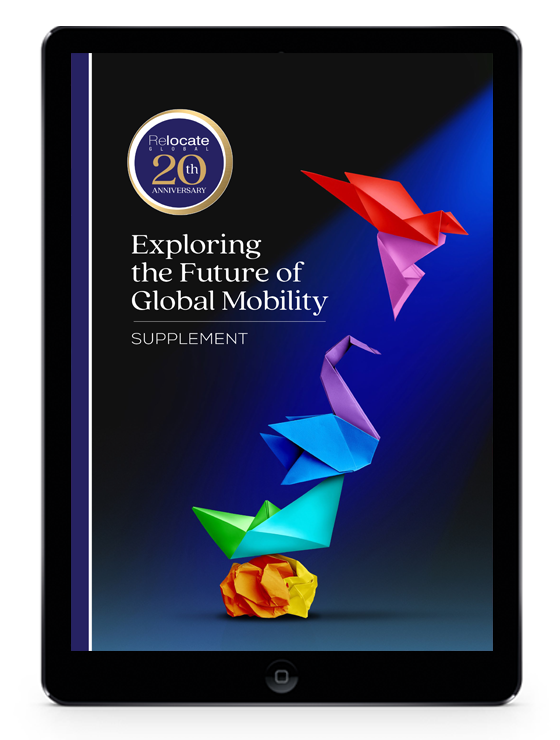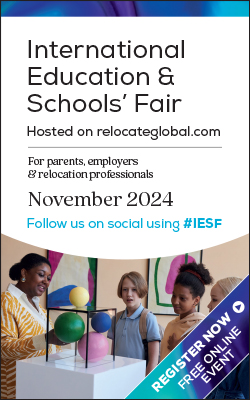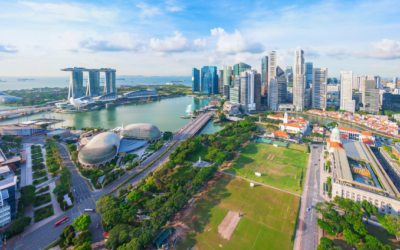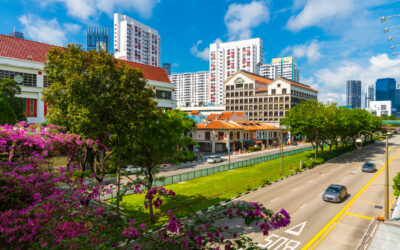Focus on Singapore
International schools are looking to India’s growing prosperity and vast population and responding to strong demand. It’s a uniquely segmented market, but a clutch of high-profile British schools are set to join over 900 other international schools already there. Sally Robinson reports.
What is it like to live there?
Most expats enjoy Singapore: It’s clean, safe, well connected, culturally interesting and has good schools.
With a population of 5.9 million, of which almost two million are expats, it’s a truly cosmopolitan city with inhabitants from Asia, Europe, the UK and the US.
The city was voted the most liveable in Asia in the latest annual location ratings report from global mobility expert, ECA International, based on a range of factors from health services, housing and leisure facilities to infrastructure, climate and the socio-political situation.
“I love how safe it is to travel at any time of day and in any area. Having everything a maximum of 30 minutes away means we can go anywhere, anytime, and get so much done each day,” says Mangla Sachdev of
Expat Business In A Bag who has lived there since 2010. “The accessibility to places like Thailand, Indonesia, Malaysia, and Australia is a major advantage.”
Singapore is particularly popular with families: “Safeguarding is very important here and that helps children to have the freedom to cultivate independence,” says one mother of a teenage daughter.
Singapore has seen an increase in the number of Asian expats in recent years, who now account for around one third of the expat population alongside a mix of British, American, European and Indian. The growth comes largely from China where new education policies discourage international school education. This has resulted in some Chinese parents sending their children to study in Singapore, often accompanied by one parent.
What about the cost of living?
According to 2024 figures from global consulting firm Mercer, Singapore is the second most expensive city in the world for expats to live.
Rents rose by 30 percent in 2022, the fastest pace in 15 years, according to Singapore’s Urban Redevelopment Authority. This was partly due to a shortage of housing caused by pandemic construction delays, and partly due to extra demands from expats leaving Hong Kong and China.
Although rental prices have now levelled in the mid-market, rents for luxury four-bed housing have continued to rise and demand is strong. Finding a family sized apartment in popular areas like Orchard Road and Holland village can be tricky.
‘The cost of living has increased hugely,” says Mangla Sachdev. “There’s more job insecurity and higher rents and some people are choosing to save more by moving elsewhere. After Covid my friends left in droves.”
Are local schools an option for expats?
Not really. Singapore and permanent residents get priority and it’s difficult to secure a place. Singaporeans are required to send their children to government, not international, schools.
Public schools are run by the Ministry of Education of Singapore and tend to be high academic performers, with Singapore consistently scoring highly in the Programme for International Student Assessment (PISA) rankings.
How does the international school landscape look?
In short, buoyant. In an intensely-competitive market around 60,000 students attend the 50 international schools in Singapore which offer a choice of well-equipped campuses. “Singapore is one of the oldest and largest private international markets in the world,” says Ashwin Goel, a member of L.E.K Consulting’s global education practice.
Locals can only apply for international schools with special clearance from the Ministry of Education. As a result, Singapore’s international schools are mainly for expats and their international status allows them to offer any curriculum and operate independently.
Singapore’s international schools are largely co-ed and through-train and they tend to be big – many have between 2000 and 4000 students. Most have a truly diverse international student body and exemplary facilities are the norm.
The international schools market has historically seen steady growth and that shows no sign of slowing.According to ISC Research, over the last five years international school numbers grew by 19%, above the global average of 10% in this time period.Capacity is regulated by the Economic Development Board (EDB) which launches request for interests (RFI) from new schools to add capacity to the market at its discretion.
The market is split into three distinct price points, according to L.E.K’s Goel: the super-premium schools which charge over SGD$35,000 per annum; premium schools with fees of between SGD$20,000-$35,000 and budget schools with SGD$10,000 to $20,000 fees.
The super-premium sector, including schools like Chatsworth International School, Tanglin Trust, XCL American Academy, XCL World Academy, United World College (UWC) and North London Collegiate School Singapore (NLCS) are highly sought after and often come with lengthy waiting lists. “As long as the supply and demand doesn’t change significantly that situation is likely to persist,” says Goel.
“Many schools, particularly those charging premium fees, are reporting an increase in student numbers,” says Janelle Torres, research manager for South-East Asia at ISC Research.The Economic Development Bureau (EDB) has recently launched a request for interest on two pieces of land slated for schools, one of which is likely to be another super premium offering.
“Singapore is different to some other expat markets such as Dubai where people tend to stay for seven or eight years,” says L.E.K’s Goel. “In Singapore, most stay for three and four years, which means schools constantly have to replenish their student numbers.”
Parents are looking for increasingly sophisticated offerings. “Schools need to innovate to stay competitive,” says ISC Research’s Torres. “Outdoor spaces are increasingly popular and the addition of Mandarin is a trend due to the influx of expatriates coming from Chinese-speaking countries. There is also a growing emphasis on specialised extracurricular activities.”
How do I choose a school?
With 50 to choose from there’s a huge range of learning experiences and curricula on offer. Which school parents choose often depends on where their children are likely to attend university – Asian students favour Australia but the United States and the UK are also popular.
Recent years have seen a flurry of activity in the international school landscape, particularly among British schools. According to L.E.K’s Goel, around 40 per cent of Singapore schools offer some form of British curriculum
The popular and well respected Tanglin Trust is the oldest British school in Southeast Asia. Opened in 1925, it will celebrate its centenary next year. It educates 2800 students and offers the English National Curriculum, developed to reflect its international context. At sixth form students are offered a dual pathway of A levels or the IB diploma. Tanglin is unique amongst international schools in Singapore in offering a choice of A Levels or the IB Diploma in sixth form. The new Tanglin Centenary Building opened in 2023 housing impressive new facilities which include a 50-metre swimming pool, physio and fitness facilities, a gymnastic centre, music room and a personal learning and development centre. In 2025 it will also open an learning centre in Gippsland, Australia, introducing the Highlands Programme where year 9 pupils attend a five week learning experience.
Dulwich College was the first British school “brand” to open in 2014 and now operates a popular and highly rated through-train school educating 2600 children aged between 2 and 18 years. Students follow an enhanced version of the English National Curriculum and take IGCSE exams followed by the IB Diploma or IB Career Related Pathway in the sixth form.
Four years ago a second highly academic British brand – North London Collegiate School (NLCS) opened. NLCS already has schools in Dubai and South Korea and follows an inquiry-based curriculum leading to IB in the sixth form. The purpose built campus in Queenstown has impressive facilities including a 50 metre swimming pool, performing arts centre, gym, two libraries, roof gardens and new science and tech facilities.
Brighton College also opened in 2020, to deliver a British pre-prep and prep-school education from pre-nursery to year 9. From this year, 2024, it has added a secondary school offering IGCSE and A levels. The school is situated on a sprawling campus which also houses the Australian International School and the Stamford American International School (SAIS).
Two other British brands are also opening shortly: Wellington College and the Perse School, which opens in January 2025 on a new campus in Bukit Timah. Wellington already has eight international schools including in China, Thailand and India and will enrol 2000 students and offer an English curriculum followed by the IB Diploma.
The Perse School will initially open a primary school for 3-11 year olds, extending to 11-18 years olds from 2026, with IGCSE exams followed by IB Diploma. The school’s new campus, a redevelopment of an existing school on Chestnut Drive, is 20 mins from the CBD.
Dover Court International School, founded in 1972 and offering IGCSE followed by IB, is owned by Nord Anglia and remains popular.
The American system is also well catered for in Singapore. The expansive Singapore American school (SAS), educates 4000 students from nursery to 18 years on a 36-acre campus. Opened it in 1956, it is undergoing a huge upgrade to include two new swimming pools, an athletics track, new elementary and middle schools and facilities for arts, technology.
At the Cognita group’s Stamford American International School (SAIS), students take either the IB Diploma or the American High School Diploma. Opened in 2009, it takes students from two months in its infant care programme in the specialist Early Learning Village which runs a Reggio-Emilia inspired programme. The elementary and secondary schools are housed on the separate Woodleigh campus for 6 to 18 year olds.
The United World College of South East Asia is a well-established and popular school with two campuses – the original Dover Street campus which opened in 1975 and the East campus which opened in 2008. The school belongs to a family of 18 UWC on four continents which aim to “make education a force to unite people, nations and cultures for peace and a sustainable future.” The interdisciplinary curriculum culminates in the IB Diploma.
Bilingual programmes are increasingly popular in Singapore, particularly those offering Mandarin such as the Canadian International School (CIS), established in 1990. An IB school for 3000 students, its Chinese-English bilingual programme is highly rated.
The German European School (GESS), founded in 1971 by a group of German parents, offers the German leaving certificate alongside the IB. German is the primary language of instruction and the second official language in the IB programme.
In addition to new schools, there has been a series of impressive renovations in recent years. The Overseas Family School follows the International Primary Curriculum followed by the IB and moved to a new campus with impressive facilities in 2015, with capacity for 4800 students.
Four years ago Nexus International School moved to a new high-tech campus in 2020 and educates 1500 students from early years through to the IB Diploma. The new purpose-built campus is based around innovative open plan learning spaces which allow students to be flexible in their learning. Design and technology rooms can be found in most learning hubs to integrate STEAM into lessons and the new campus also includes an Olympic sized pool, FIFA and World Rugby specified AstroTurf pitches and a two-tier theatre.
How hard is it to get a place?
In most premium schools there are often lengthy waiting lists. Schools in Singapore usually offer a rolling admissions process, meaning if a space is available it can be taken, regardless of the time of year.
What curricula are on offer?
A huge range from British and American to Japanese, Dutch, German, French and Chinese. Most schools teach in English but there is a good range of bilingual options on offer, of which Mandarin is particularly popular.The IB is the most popular curriculum in Singapore reflecting the international student body.
The increase in the number of Asian students has created a spike in Mandarin language programmes. The Canadian International School and Singapore American School, XCL academy and Dulwich College all offer bilingual English-Mandarin programmes.


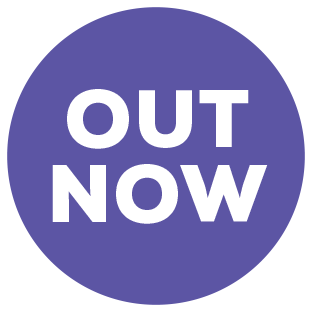 Magazine
Magazine